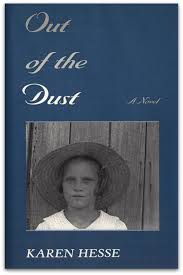Plot Summary: Harvey and his little (but bigger) brother are playing on the late winter streets of their hometown. When they see a commotion in front of their house, they know something has happened. Soon they find out that their father has had a heart attack and died. Through Harvey’s eyes, the reader experiences the confusing and scary reality of losing a loved one for the first time. Harvey and his brother struggle to make sense of their father’s death as they deal with the adult emotions and reactions surrounding them. Through Bouchard’s sparse but beautiful writing (translated from French by Helen Mixter), and Janice Nadeau’s haunting illustrations, an emotional and heartfelt story of loss is revealed.
Critical Evaluation: Janice Nadeau’s surreal and dreamlike illustrations help complete the emotional experience of Harvey, by Herve Bouchard. Cloudy images and disproportionate people and rooms help convey Harvey’s confusion and sadness in the wake of his father’s sudden death. Repetitive images, such as Harvey’s mother being held by the priest and Harvey walking into his uncle’s waiting arms, allow the reader to slow down and feel the moment happen rather than rushing to the next picture (as so often happens with graphic novels). Characters are set against vast geometric (slightly off-kilter) landscapes that dwarf their bodies while also drawing attention to their posture, facial expression and demeanor. At times Nadeau draws with sharp clarity – Harvey’s little brother’s face and clothing, the living room rug, the interior of the coffin – as if to highlight the things that draw Harvey back into reality. Adults are blurry and ill-proportioned, often fading into the background. Near the end of the book Harvey tries to stop his brother from watching the adults closing the coffin: “Instead I would show him all the different ways our Father could be using words and drawings and colors and expressions. ‘Come see, we’ll show each other all of his looks and the thousands of ways to draw his arms.'” Even within the text, Harvey uses drawings to help actualize and make sense of his experience. Likewise, Nadeau helps the reader experience the death of a father through his son’s eyes.
Reader’s Annotation: Harvey’s father dies suddenly one late winter day. Can a young boy make sense of death when the adults around him just make it more confusing?
Author Information: “Herve Bouchard is a professor of literature at a community college in Chicoutimi, Quebec, and a novelist. He lives in Saguenay, Quebec.
Janice Nadaeu is an illustrator who studied graphic design at the Universite du Quebec a Montreal and illustratioin at the Ecole supierieure des arts decoratifs in Strasbourg, France. She lives in Montreal, Quebec.”
Bouchard, H. (2010). Harvey. Toronto: Groundwood Books.
Genre: Graphic Novel
Curriculum Ties: Children coping with death, psychology
Booktalk Ideas: Great Graphic Novels, Brothers, Fathers and Sons
Reading Level/Interest Level: 10 and up/13-adult
Challenge Issues and Plans: Depiction of death. Religious themes.
If this book was challenged:
- I would ensure that I am familiar with the material, including any part that might cause concern to parents/patrons.
- I would actively listen to the concerns of the parent/patron in an effort to fully understand their point of view. I would ask clarifying questions and avoid any judgmental language.
- I would offer my reasons for including the material in a non-confrontational but matter-of-fact manner.
- I would offer a list of reviews and awards that informed my decision to add the material to the collection.
- I would draw the parent/patron’s attention to ALA’s Library Bill of Right.
- I would have handy for perusal my library’s collection policy.
- If the parent/patron wished to continue with the challenge, I would offer an official challenge form that would be submitted to the library’s (or school’s) board of directors.



